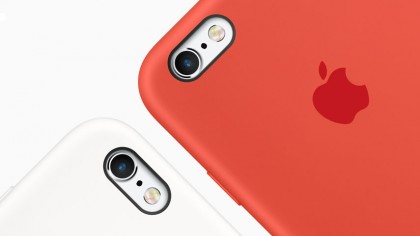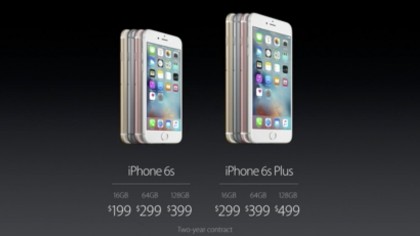10 things you need to know about the iPhone 6S Plus
6. More megapixels for the first time in years

Apple hasn't increased the iPhone camera resolution since 2011. It was eight megapixels all the way from the iPhone 4S, until now. The iPhone 6S Plus has a 12-megapixel main camera sensor.
While Apple hasn't told us exactly how big the camera sensor is, by the way it was described it suggests there has been a significant hit to the size of the sensor pixels. In other words, the size of the sensor itself hasn't been dramatically increased from the 1/3-inch iPhone 6 sensor.
To keep noise down Apple has used similar deep trench isolation to what we saw in the Samsung ISOCELL sensor, used in the Samsung Galaxy S5 and other phones since. What this does is to reduce crosstalk between the sensor pixels for an all-round cleaner images: less noise, better colour.
Apple didn't mention about optical image stabilisation, but we image it'll stay as-is: the iPhone 6S Plus gets it, the iPhone 6 doesn't.
7. 4K video and selfie flashes are in
The iPhone 6S Plus will be among the first phones natively able to shoot video at 4K. Some clever geeks managed to hack it into their iPhone 6 recently, but you won't need such jiggery-pokery going forwards.
On the fluffier side of the camera, the iPhone 6S Plus will also add a TrueTone flash feature to the selfie snapper. It's not with dedicated flash hardware, but using the phone's screen to fire out a colour that'll suit the scene.
It all sounds very silly, but the display driver actually turbo-powers the backlight to make the display even brighter. Prepare to be annoyed by groups of morons with ultra-bright screens pointed at themselves, littering the streets of every major city.
Sign up for breaking news, reviews, opinion, top tech deals, and more.
8. It uses the Apple A9 CPU

The iPhone 6S Plus predictably has a much faster CPU than the old model. And, sure enough, it keeps the same naming convention. It has an Apple A9 CPU. Apple says it the CPU part is 70 percent faster, and the GPU an impressive-sounding 90 percent faster.
Not bad, right? That means more fancy graphics, more enemies on-screen at once and all that jazz. Pity 90 percent of the games out there will still be free-to-play casual dross.
However, efficiency improvements may actually end up being more noticeable for some. Apple says the architecture has changed. It hasn't exactly told us what to, but it's not hard to work it out: the Apple A8 is made using a 20nm process and the Apple A9 will be made with a 14nm process. We'd bet our last Rolo on it.
We've seen this kind of architecture in Samsung's latest phones including the Samsung Galaxy S6. It helped keep those phones nice and efficient, and should hopefully help the iPhone 6S Plus in the same manner too.
9. It'll be out on September 25
Pre-orders for the Apple 6S Plus go live on September 12. Get your debit card details ready if you're keen. Then, as ever, the phone will actually go on sale two weeks later.
Apple doesn't like to keep us waiting for too long. And we like that. You can expect the queues to start forming at the world's biggest Apple stores around… now.
If you want to get an iPhone 6S Plus on launch day, we strongly recommend setting a calendar reminder on your phone for the pre-order day. This one is going to sell out.
10. It'll cost about the same as the iPhone 6S Plus

If you think the iPhone 6S Plus sounds a bit too familiar, a bit too like the iPhone 6 Plus, at least the prices are the same. During the demo Apple just gave us all its US pricing details, with the iPhone 6S Plus starting at $299 on a contract.
Buying in the UK you'll have to pay through the nose unless you're on a high-end, expensive contract. And SIM-free starting price will be £619, rocking up to £699, and £789 for the top-end version. As before, you can get the phone with either 16GB, 64GB or 128GB of internal storage.
All in all, the iPhone 6S Plus seems like a good buy, but remember there's also the iPhone 6S knocking around out there.

Andrew is a freelance journalist and has been writing and editing for some of the UK's top tech and lifestyle publications including TrustedReviews, Stuff, T3, TechRadar, Lifehacker and others.